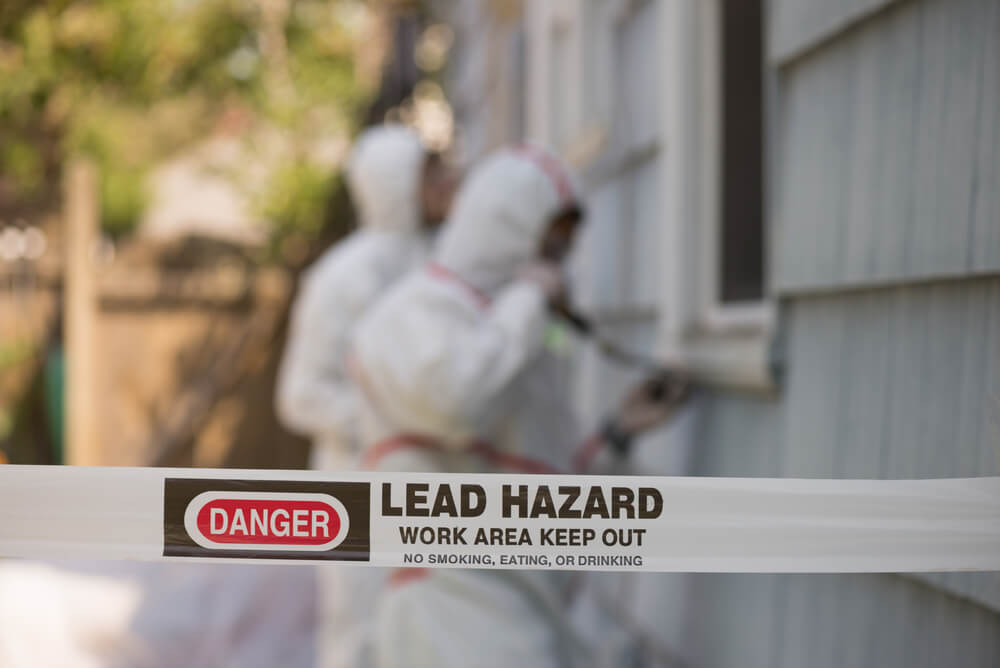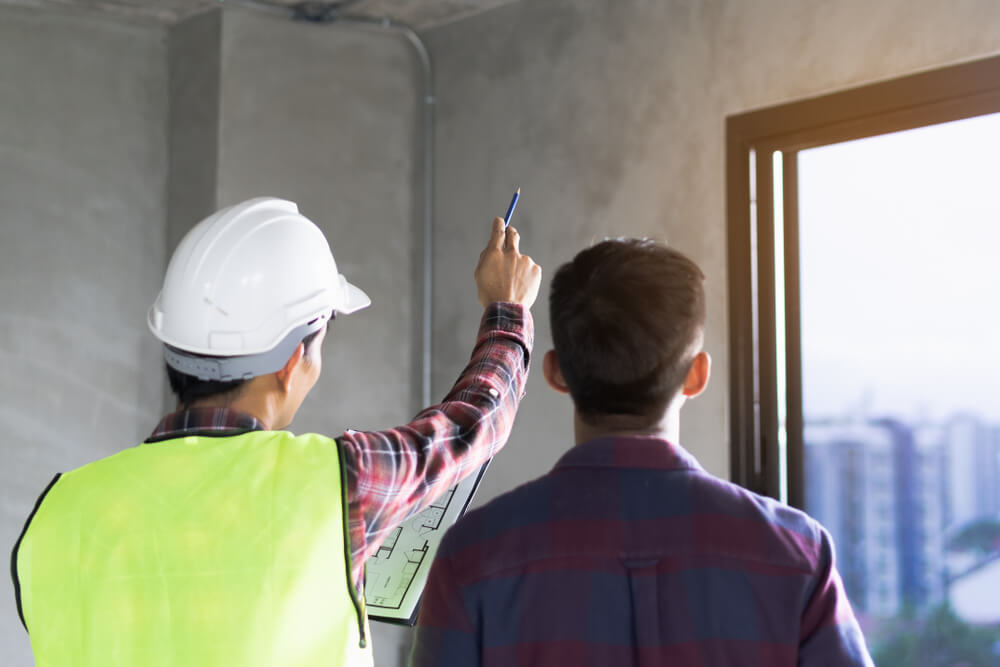Lead paint used to be the prevailing coating of choice for contractors across the United States. However, it wasn’t until 1978 that the government fully understood the health impacts of this hazardous substance, taking action to ban lead paint for consumer use.
Homes and buildings built before the lead bans of the late ’70s can contain any number of lead-coated surfaces such as doors, windows, railings, and walls. When inhaled or ingested, lead can cause irreversible damage to the health of adults and especially children.
Renovations and repairs to homes built prior to the lead ban require certification from the Environmental Protection Agency (EPA) and specialized education through EPA-approved lead training programs to ensure compliance with lead-safe work practices. The EPA’s Lead Renovation, Repair, and Painting Program provides rules for firms taking on the responsibility of lead-related activities, although there are some exceptions.
What Is the EPA’s Lead Renovation, Repair, and Painting Program?
The U.S. Environmental Protection Agency is an independent agency of the federal government aiming to protect human health and the environment. The EPA has implemented several environmental laws and regulations, including legislation like the Clean Water and Air Acts, the Pollution Prevention Act, the Endangered Species Act, and more.
The Lead Renovation, Repair, and Painting Program (RRP) requires contractors and firms performing lead-related renovations, repairs, or painting projects in certain facilities built before 1978 to be certified by the EPA through approved training providers. Workers must always follow the lead-safe work practices learned in these EPA lead certification training courses. This includes cleanup protocols, dust minimization tactics, area enclosure techniques, and specific construction practices.
It’s not just contractors who need to keep the RRP Rule in mind. These regulations and restrictions can also apply to:
- Consumers (home buyers)
- Renters
- Real estate agents
- Property managers
- Landlords
- Vendors
- Childcare center operators
Like the overarching goal of the EPA, the RRP Rule aims to protect the public’s health. Lead-safe work practices help create a safer work environment during construction and ensure a building is correctly cleaned and inspected before residents re-enter the space.
Adhering to the RRP Rule
In order to protect public health and safety plus the health of workers and contractors, renovation companies must stay current in their EPA certifications for lead-safe construction. There are very few exceptions to the RRP Rule.
EPA Certification for Lead Renovations
Contractors and construction companies that take part in activities that disturb lead-contaminated materials must obtain the proper EPA certification to comply with the RRP Rule. Professional lead-safe training courses help keep work teams in line with the best practices to protect their health. In addition, regular certification refresher courses help to keep the information current for all contracting teams.
There are several types of EPA certifications to acquire in order to adhere to the RRP Rule:
- Lead renovator
- Lead inspector
- Lead abatement worker
- Lead risk assessor
- Lead dust sampling technician
Who Must Comply
Failure to comply with the EPA’s RRP Rule can result in costly fines for construction companies and contractors. For example, each day an uncertified lead contractor commits an infraction runs the risk of fines as high as $37,500 if discovered. In addition, the discovery of willful violations can lead to double penalties and potential imprisonment.
The EPA requires up-to-date certifications for all contractors and construction workers participating in activities that disturb lead paint or lead-coated surfaces in three kinds of facilities:
- Child-occupied facilities like daycare centers, afterschool programs, camps, etc.
- Schools including elementary, middle, and high schools, as well as colleges and universities
- Homes, apartments, and other residential dwellings built before 1978
All team members taking part in lead-related activities must obtain a lead renovator certification before beginning construction.
Is Anyone Excluded from RRP Rule Compliance?
There are a few instances where contractors or homeowners are excluded from adhering to the RRP Rule. Most often, it is for minor repairs or an emergency renovation, requiring verified inspections and thorough cleanup after construction wraps up.
Even with these few exceptions, it’s essential to work in a lead-safe manner if possible. There is a high potential for homes and facilities built before 1978 to contain lead-contaminated materials. Compliance with the RRP Rule makes construction environments safer for workers and residents, too.

4 Common Exemptions From the EPA’s RRP Rule
It’s never advisable to go against lead-safe work practices, but there are a couple of examples of activities exempt from the EPA’s RRP Rule:
1. Minor Repairs and Renovation Activities
Minor interior repairs that disturb less than six square feet of surfaces coated with lead paint per room are exempt from the RRP Rule. Exterior construction activities are also excluded as long as no more than 20 square feet of lead-contaminated surfaces are disturbed during the renovations.
It’s important to note that these RRP Rule exclusions are not applicable to window repairs and replacements. Lead-contaminated surfaces such as window sills and sashes should be removed or demolished using the proper work practices for lead safety.
2. Lead-Free Renovations
It’s estimated that nearly 24 million homes in America contain some form of deteriorating lead paint. At least 4 million of those homes are dwellings where one or more children reside
Yes, those statistics sound staggering, but those numbers are slowly dwindling. Since the implementation of lead paint bans in 1978, new construction no longer contains lead-contaminated paints, surfaces, and coated materials. Construction on modern buildings where lead isn’t present is exempt from the RRP Rule.
3. Emergency Construction
Sometimes there’s an immediate need for remediation of issues like storm damage or a burst pipe that can make a home or building unsafe for occupation. Emergency repairs don’t require adherence to the RRP Rule. However, after the work is completed, verified cleaning is necessary before re-entering the residence.
4. Do-It-Yourself Repairs
Homeowners who choose to DIY their home repairs are also exempt. This includes any help a homeowner receives from friends or family during renovations, as long as those people don’t receive payment.
Although doing your own home renovations might seem like the cheaper, faster option, it’s not a very wise way to work. Instead, always go with an EPA-certified contractor to ensure safe working conditions and proper cleanup, protecting the health of yourself and your family.
Always Work Lead-Safe When You Can
Even though there are several exceptions to the EPA’s Lead Renovation, Repair, and Painting Rule, there are no exceptions to the extreme health hazards lead poisoning can cause. The health of property owners and workers should always be the top priority on sites where lead is present.
Lead-safe work practices ensure that the project area is kept safe and clean throughout the duration of construction. Plus, certified lead abatement specialists know the proper cleaning methods to make a space safe for occupation once again. When possible, contractors and firms should always apply lead-safe work practices to any activity.
Going through initial lead renovator training courses and regular refresher courses keeps these safe construction practices fresh in workers’ minds. These courses teach skills that an average homeowner might never be aware of, which is why a DIY job is so unsafe. Despite the RRP Rule exemptions listed above, it’s crucial for homeowners or property managers to find an EPA-certified contractor when attempting activities that disturb lead-contaminated surfaces.


